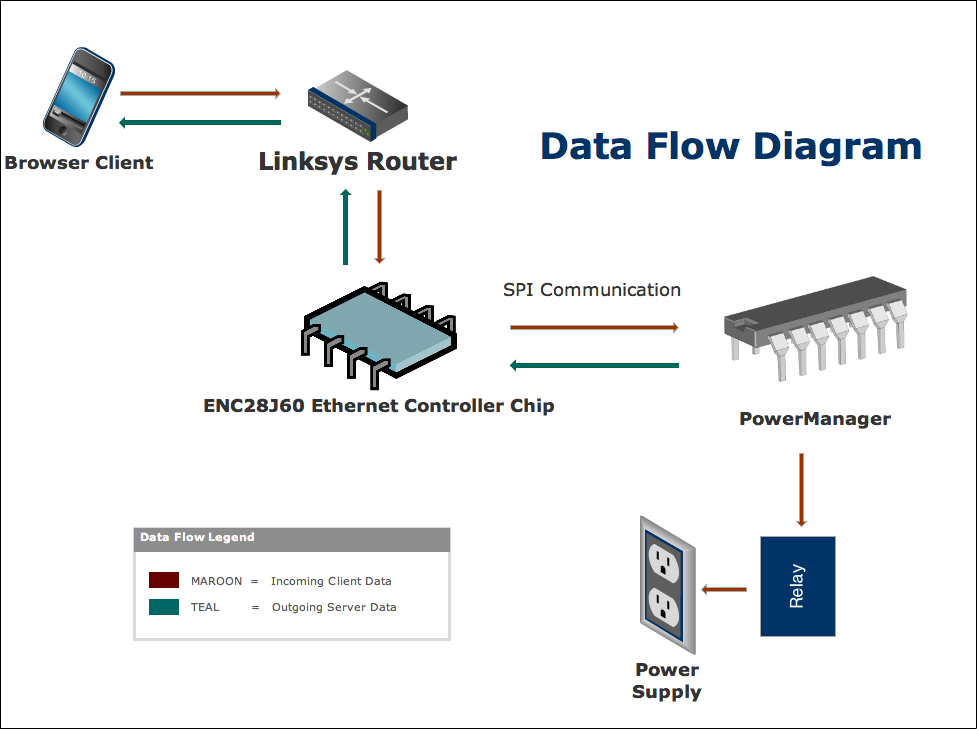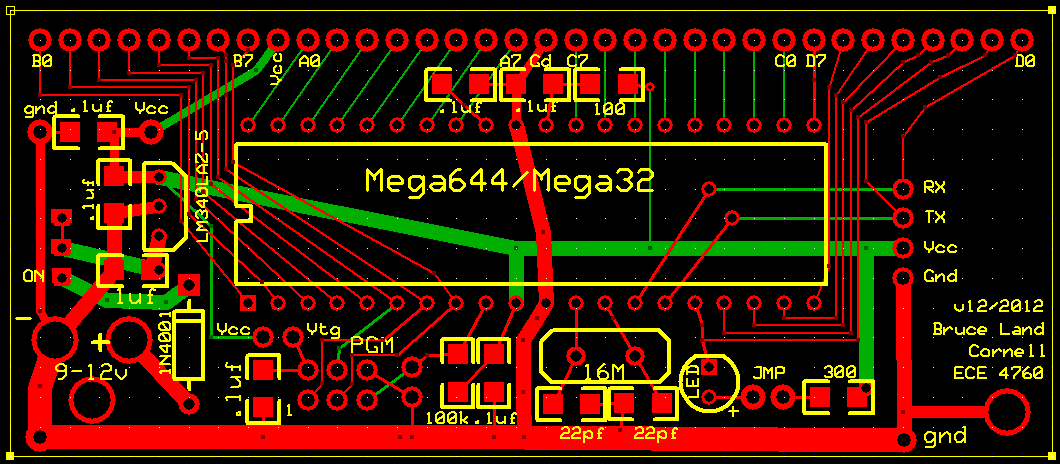Power Manager : Remote Power Control Through LAN
PowerManager is a remote power
management system that can be controlled through a web browser on a local area
network (LAN). Devices plugged into PowerManager's outlets can be turned on or
off with the click of a button on a webpage. PowerManager runs on an ATMEGA644
microcontroller and an ENC28J60 Ethernet controller. Together, this embedded
system acts as a web server to serve a web page that allows the user to turn on
or off the supply of power to the connected devices. The project serves as a
fundamental element in a home automation system.
These days, everyone has a smart phone in their pocket connected to their home LAN. With such a powerful device, why should anyone have to physically control their home's power and lighting? With the advancement of micro controller technology, it is now possible to have every device in a home be connected to a home LAN. These home devices can act as web servers to provide a web-based GUI to control and monitor the device. The simplest and most necessary kind of control is turning a device on or off. PowerManager fulfills this need in a standard way; any device with a standard electrical plug can be controlled (on or off) through home LAN.
The PowerManager system is based on a client server model of communication. The PowerManager acts as a web server embedded on the ATMEGA644 MCU and ENC28J60 Ethernet controller. The MCU connects to the Ethernet controller through an SPI interface; the controller handles the physical and MAC layers of networking, and provides a standard interface to the MCU to send and receive packets. With this interface, the MCU is able to run IP, TCP, and HTTP layers. Additionally, the MCU connects through an audio cable to a power box. The power box contains a relay to control the flow of power to standard electrical sockets; the other end of the audio cable is used to control this relay, allowing full control of power from the MCU.

To use the system, a client (perhaps a browser on an iPhone) sends a request over HTTP to the PowerManager web server, which returns a page indicating the current state of power (on or off) and a button to toggle the state. When receiving a state change request, the MCU calls a CGI function to change its output to the power box, effectively changing the state of power flow to the electrical outlets.

These days, everyone has a smart phone in their pocket connected to their home LAN. With such a powerful device, why should anyone have to physically control their home's power and lighting? With the advancement of micro controller technology, it is now possible to have every device in a home be connected to a home LAN. These home devices can act as web servers to provide a web-based GUI to control and monitor the device. The simplest and most necessary kind of control is turning a device on or off. PowerManager fulfills this need in a standard way; any device with a standard electrical plug can be controlled (on or off) through home LAN.
The PowerManager system is based on a client server model of communication. The PowerManager acts as a web server embedded on the ATMEGA644 MCU and ENC28J60 Ethernet controller. The MCU connects to the Ethernet controller through an SPI interface; the controller handles the physical and MAC layers of networking, and provides a standard interface to the MCU to send and receive packets. With this interface, the MCU is able to run IP, TCP, and HTTP layers. Additionally, the MCU connects through an audio cable to a power box. The power box contains a relay to control the flow of power to standard electrical sockets; the other end of the audio cable is used to control this relay, allowing full control of power from the MCU.

To use the system, a client (perhaps a browser on an iPhone) sends a request over HTTP to the PowerManager web server, which returns a page indicating the current state of power (on or off) and a button to toggle the state. When receiving a state change request, the MCU calls a CGI function to change its output to the power box, effectively changing the state of power flow to the electrical outlets.

No comments:
Post a Comment